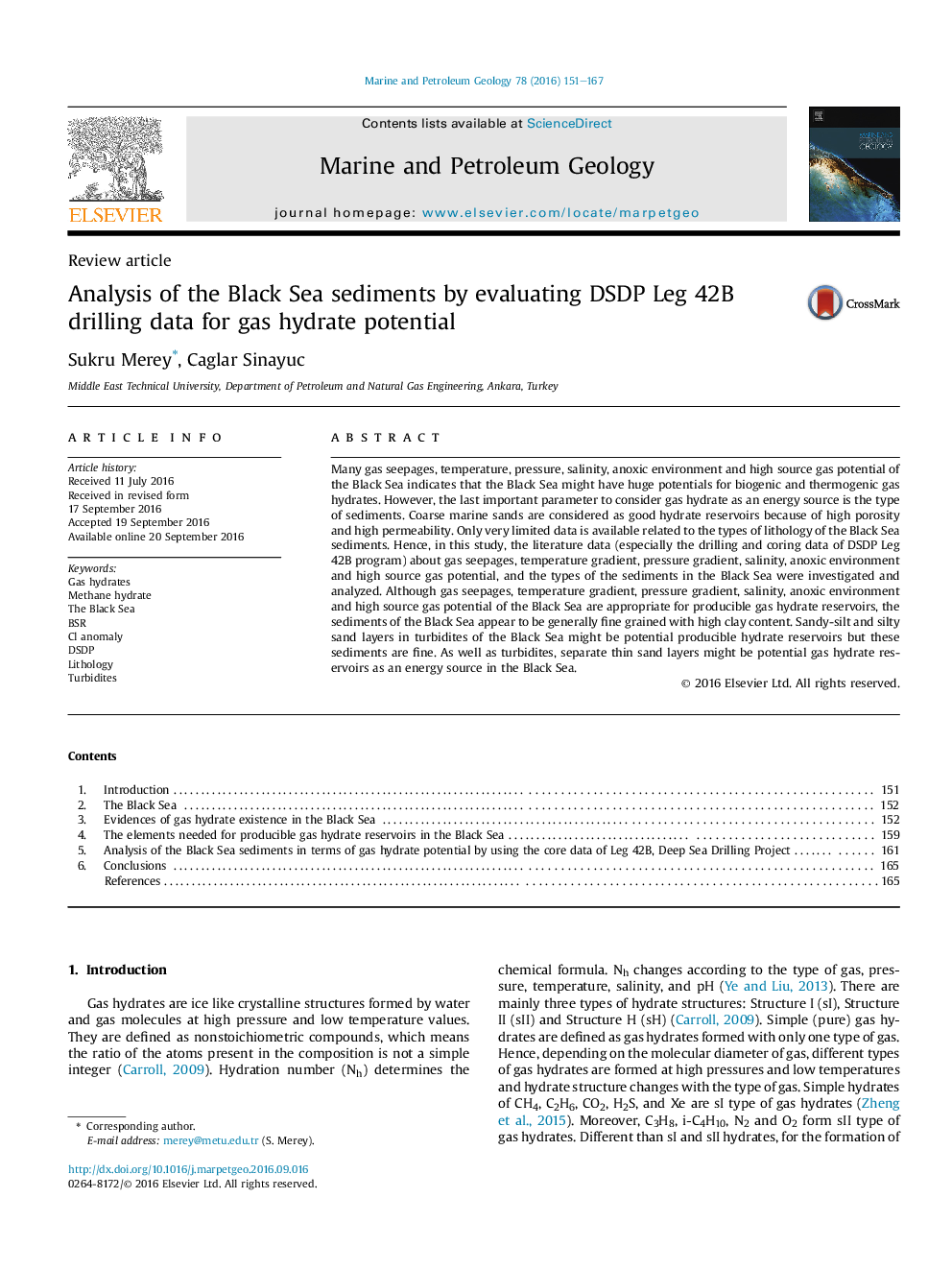| Article ID | Journal | Published Year | Pages | File Type |
|---|---|---|---|---|
| 6434377 | Marine and Petroleum Geology | 2016 | 17 Pages |
â¢Gas seepages and mud volcanoes are common in the Black Sea.â¢The Black Sea has huge biogenic and thermogenic gas hydrate potential.â¢Gas hydrates deposited in turbidites and coarse sands in the Black Sea might be considered as an energy source.â¢BSRs and multiple BSRs are commonly observed in the Black Sea.
Many gas seepages, temperature, pressure, salinity, anoxic environment and high source gas potential of the Black Sea indicates that the Black Sea might have huge potentials for biogenic and thermogenic gas hydrates. However, the last important parameter to consider gas hydrate as an energy source is the type of sediments. Coarse marine sands are considered as good hydrate reservoirs because of high porosity and high permeability. Only very limited data is available related to the types of lithology of the Black Sea sediments. Hence, in this study, the literature data (especially the drilling and coring data of DSDP Leg 42B program) about gas seepages, temperature gradient, pressure gradient, salinity, anoxic environment and high source gas potential, and the types of the sediments in the Black Sea were investigated and analyzed. Although gas seepages, temperature gradient, pressure gradient, salinity, anoxic environment and high source gas potential of the Black Sea are appropriate for producible gas hydrate reservoirs, the sediments of the Black Sea appear to be generally fine grained with high clay content. Sandy-silt and silty sand layers in turbidites of the Black Sea might be potential producible hydrate reservoirs but these sediments are fine. As well as turbidites, separate thin sand layers might be potential gas hydrate reservoirs as an energy source in the Black Sea.
